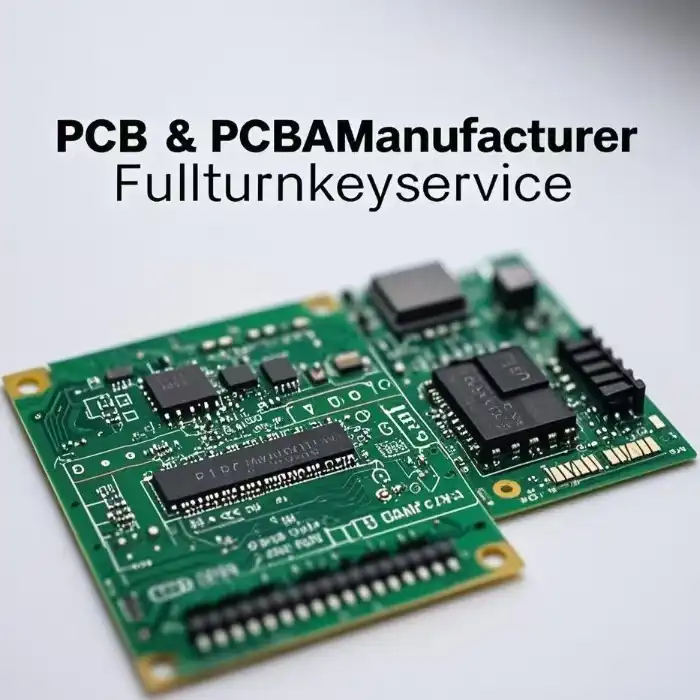Sourcing Medical-Grade Electronic Components for PCBA
Sourcing medical-grade electronic components for PCBA (Printed Circuit Board Assembly) is a critical process in the development of reliable and high-performance medical device. This intricate task requires meticulous attention to detail, adherence to stringent quality standards, and a deep understanding of regulatory requirements. Medical Device PCBA demands components that can withstand rigorous operating conditions while maintaining precise functionality. The sourcing process involves identifying reputable suppliers, verifying component specifications, ensuring traceability, and conducting thorough quality checks to guarantee the integrity and reliability of the final medical device.

Understanding Medical-Grade Electronic Components
Defining Medical-Grade Components
Medical-grade electronic components are specialized parts designed to meet the stringent requirements of the healthcare industry. These components are engineered to withstand rigorous operating conditions, maintain high reliability, and comply with stringent regulatory standards. Unlike consumer-grade electronics, medical-grade components undergo extensive testing and certification processes to ensure their suitability for use in critical medical applications.
The key characteristics that set medical-grade components apart include:
- Enhanced durability and longevity
- Improved resistance to environmental factors
- Higher precision and accuracy
- Stringent quality control measures
- Compliance with medical industry regulations
When sourcing components for Medical Device PCBA, it's crucial to understand these unique attributes to ensure the final product meets the required standards of performance and reliability.
Regulatory Compliance and Certifications
The medical device industry is heavily regulated to ensure patient safety and product efficacy. When sourcing components for Medical Device PCBA, it's essential to consider the regulatory landscape and required certifications. Some of the key regulations and standards include:
- FDA 21 CFR Part 820 (Quality System Regulation)
- ISO 13485 (Medical Devices Quality Management Systems)
- IEC 60601 (Medical Electrical Device Safety)
- RoHS (Restriction of Hazardous Substances)
- REACH (Registration, Evaluation, Authorization, and Restriction of Chemicals)
Ensuring that the sourced components comply with these regulations is crucial for the successful development and approval of medical devices. Manufacturers and suppliers should provide documentation and certifications to verify compliance, which should be carefully reviewed during the sourcing process.
Key Considerations in Sourcing Medical-Grade Components
Quality Assurance and Reliability
Quality assurance is paramount when sourcing components for Medical Device PCBA. The reliability of medical devices directly impacts patient safety and treatment efficacy. To ensure the highest standards of quality, consider the following aspects:
- Supplier Qualifications: Evaluate suppliers based on their track record, quality management systems, and industry certifications.
- Component Testing: Implement rigorous testing protocols to verify component performance and reliability.
- Traceability: Ensure components can be traced back to their origin for quality control and recall purposes.
- Failure Analysis: Establish procedures for analyzing and addressing potential component failures.
- Lot Control: Implement strict lot control measures to manage component batches effectively.
By prioritizing quality assurance, manufacturers can minimize the risk of component failures and ensure the longevity and reliability of their Medical Device PCBA.
Supplier Evaluation and Selection
Selecting the right suppliers is crucial for sourcing high-quality medical-grade components. A thorough evaluation process should be implemented to assess potential suppliers. Key factors to consider include:
- Industry Experience: Prioritize suppliers with a proven track record in the medical device industry.
- Quality Management Systems: Evaluate suppliers' quality control processes and certifications.
- Manufacturing Capabilities: Assess suppliers' ability to meet your specific component requirements.
- Supply Chain Stability: Consider suppliers' financial stability and supply chain resilience.
- Regulatory Compliance: Ensure suppliers adhere to relevant industry regulations and standards.
Establishing long-term partnerships with reliable suppliers can lead to improved component quality, consistent supply, and better overall performance of Medical Device PCBA.
Component Obsolescence Management
Component obsolescence is a significant challenge in the medical device industry, particularly for long-lifecycle products. To mitigate the risks associated with obsolescence, consider the following strategies:
- Lifecycle Analysis: Conduct thorough lifecycle analyses of components during the selection process.
- Alternative Sourcing: Identify multiple suppliers or alternative components to ensure supply continuity.
- Last-Time-Buy Planning: Develop strategies for managing last-time-buy scenarios when components are discontinued.
- Design for Longevity: Incorporate components with extended lifecycles into your Medical PCBA designs.
- Regular Market Monitoring: Stay informed about market trends and potential obsolescence risks.
Effective obsolescence management ensures the long-term viability of medical devices and minimizes the need for costly redesigns or product recalls.
Best Practices for Sourcing Medical-Grade Components
Establishing a Robust Sourcing Strategy
Developing a comprehensive sourcing strategy is essential for ensuring a reliable supply of high-quality components for Medical Device PCBA. Key elements of an effective sourcing strategy include:
- Risk Assessment: Identify and evaluate potential risks in the sourcing process.
- Supplier Diversification: Avoid over-reliance on a single supplier by cultivating multiple sources.
- Cost Management: Balance cost considerations with quality and reliability requirements.
- Continuous Improvement: Regularly review and refine sourcing processes to enhance efficiency and effectiveness.
- Technology Integration: Leverage digital tools and platforms to streamline sourcing and supplier management.
By implementing a robust sourcing strategy, manufacturers can ensure a steady supply of high-quality components for their Medical Device PCBA projects.
Implementing Stringent Quality Control Measures
Quality control is paramount in the sourcing of medical-grade components. Implementing stringent quality control measures helps ensure that only components meeting the highest standards are used in Medical Device PCBA. Key aspects of quality control include:
- Incoming Inspection: Conduct thorough inspections of received components to verify specifications and quality.
- Statistical Process Control: Implement statistical methods to monitor and control component quality over time.
- Failure Mode and Effects Analysis (FMEA): Identify potential failure modes and implement preventive measures.
- Documentation and Record-Keeping: Maintain detailed records of quality control processes and results.
- Continuous Training: Ensure that quality control personnel are well-trained and up-to-date with industry standards.
By maintaining rigorous quality control measures, manufacturers can minimize the risk of defects and ensure the reliability of their Medical Device PCBA.
Leveraging Technology in Component Sourcing
Technology plays a crucial role in streamlining the sourcing process for medical-grade components. Leveraging advanced tools and platforms can enhance efficiency, accuracy, and traceability in component sourcing. Some key technological applications include:
- Electronic Component Databases: Utilize comprehensive databases for component selection and comparison.
- Supply Chain Management Software: Implement software solutions to manage supplier relationships and track orders.
- Artificial Intelligence: Leverage AI-powered tools for predictive analytics and demand forecasting.
- Blockchain Technology: Explore blockchain applications for enhancing supply chain transparency and traceability.
- Internet of Things (IoT): Implement IoT solutions for real-time monitoring of component quality and supply chain performance.
Conclusion
Sourcing medical-grade electronic components for PCBA is a complex but crucial process in the development of reliable and high-performance medical device. By understanding the unique requirements of medical-grade components, adhering to regulatory standards, implementing robust quality control measures, and leveraging advanced technologies, manufacturers can ensure the integrity and reliability of their Medical Device PCBA. As the medical device industry continues to evolve, staying informed about the latest sourcing strategies and best practices is essential for maintaining a competitive edge and delivering high-quality medical devices that improve patient outcomes.
Turnkey Medical PCBA Solutions | Fabrication + Assembly
Ring PCB Technology Co., Limited offers comprehensive turnkey solutions for Medical Device PCBA, leveraging our 17 years of expertise in the industry. Our integrated services encompass PCB fabrication, component sourcing, SMT assembly, and rigorous functional testing. Our expert engineering team optimizes designs to reduce risks and costs, while our stringent quality control measures, including X-ray inspection and AOI testing, ensure zero-defect delivery. Trust Ring PCB for innovative, reliable, and cost-effective PCBA solutions tailored to your medical device needs.
For expert guidance and support in sourcing medical-grade components for your PCBA projects, contact Ring PCB at [email protected]. Our team of experienced professionals is ready to assist you in navigating the complexities of medical device manufacturing and ensuring the highest standards of quality and reliability in your products.
References
1. Johnson, M. E., & Wang, S. (2018). Sourcing strategies for medical device manufacturers: Balancing cost and quality. Journal of Medical Engineering & Technology, 42(3), 215-227.
2. Smith, A. R., & Brown, L. K. (2019). Quality assurance in medical-grade electronic component sourcing: A comprehensive guide. Medical Device Quality Assurance, 7(2), 89-104.
3. Lee, H. L., & Shen, Z. J. M. (2020). Managing supply chain disruption risks for medical equipment manufacturers. Operations Research for Health Care, 24, 100240.
4. Garcia-Sabater, J. P., Maheut, J., & Garcia-Sabater, J. J. (2021). A framework for sourcing medical-grade electronic components in the era of Industry 4.0. Procedia Manufacturing, 54, 213-218.
5. Thompson, R. F., & Davis, C. L. (2022). Regulatory challenges in sourcing components for medical equipment PCBA: A global perspective. International Journal of Medical Device Regulatory Affairs, 9(1), 45-62.

Welcome to Ring PCB! Share your inquiry, and receive a tailored quotation!

Ring PCB, your trusted partner for PCB & PCBA Full Turnkey Solutions



